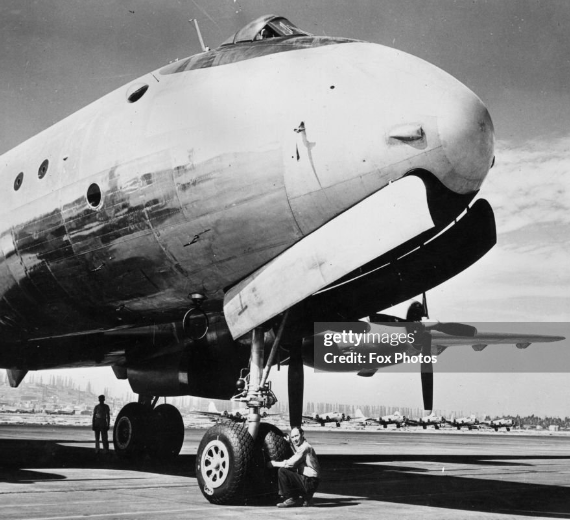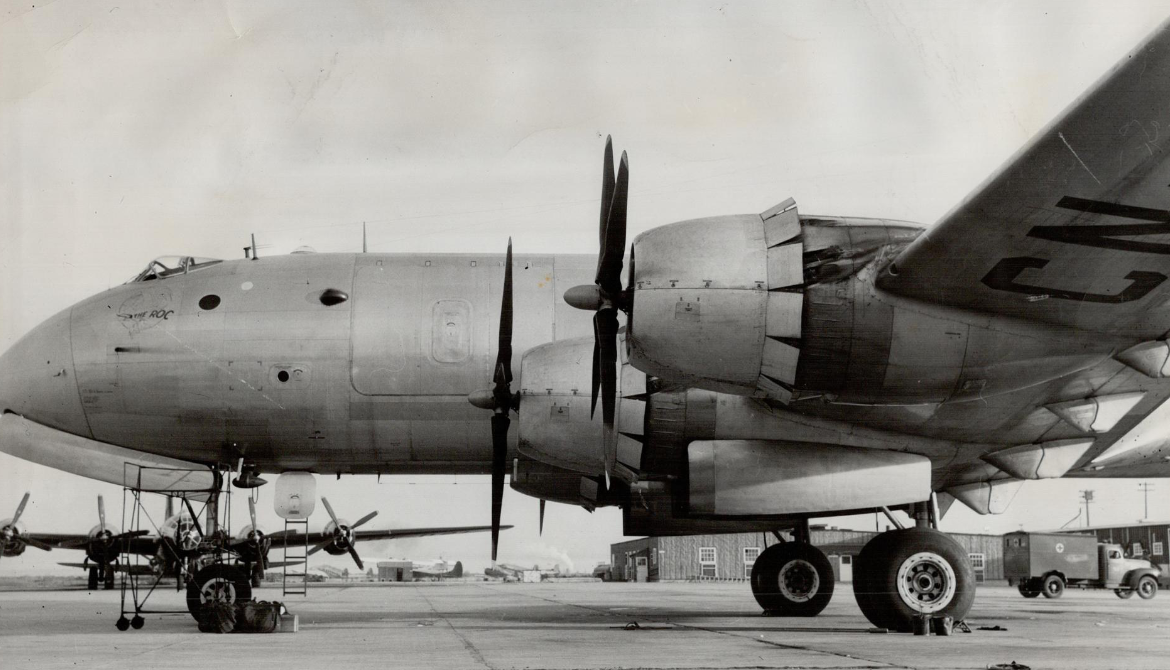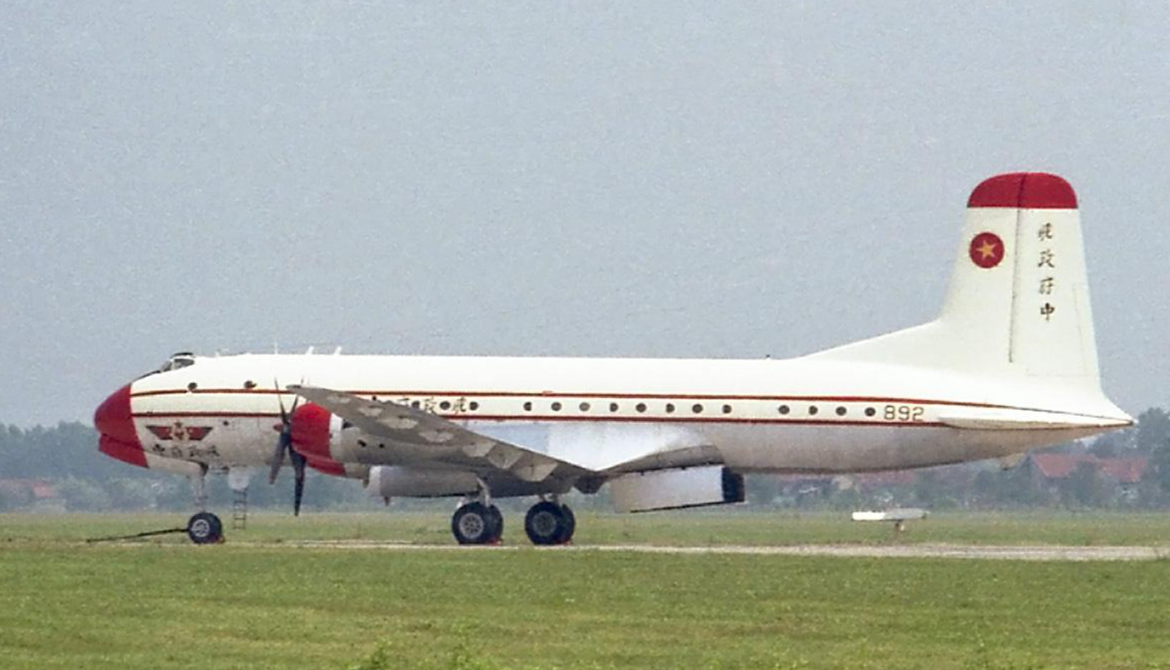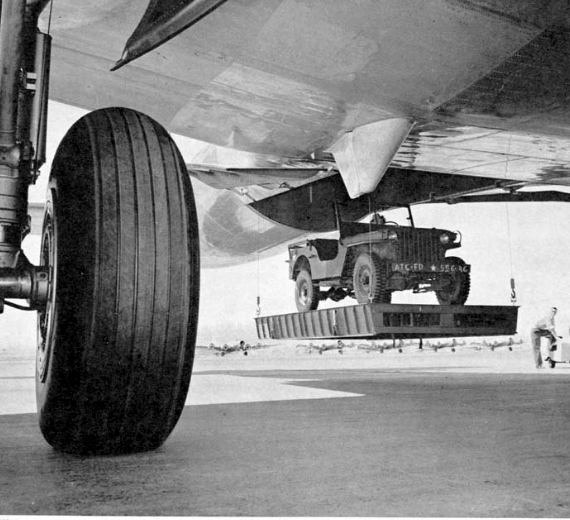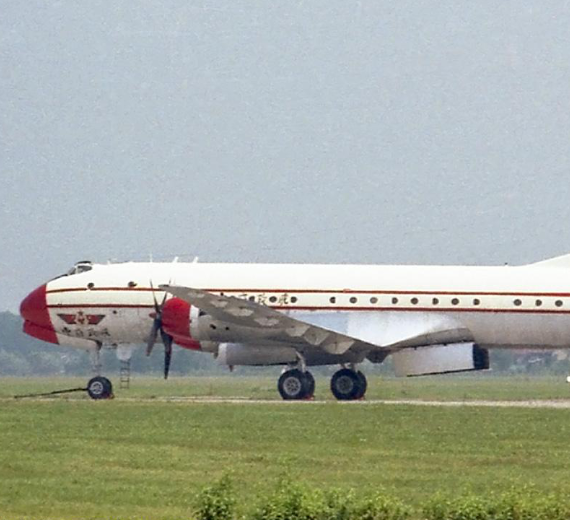Douglas
C-74 Globemaster I
Role Strategic airlifter
Manufacturer Douglas Aircraft Company
First flight 5 September 1945
Retired 1969 (last operational flight)
Status Retired – 1959 (military), 1969 (civilian)
Primary users United States Army Air Forces
United States Air Force
Produced 1945–1947
Number built 14 (one converted to C-124 prototype)
Developed into Douglas C-124 Globemaster II
.
History
Douglas
C-74 Globemaster I
 The Douglas C-74 Globemaster was a United States heavy-lift cargo aircraft built by the Douglas Aircraft Company in Long Beach, California. The aircraft was developed after the Japanese attack on Pearl Harbor. The long distances across the Atlantic and, especially, Pacific oceans to combat areas indicated a need for a transoceanic heavy-lift military transport aircraft. Douglas Aircraft Company responded in 1942 with a giant four-engined design. Development and production modifications issues with the aircraft caused the first flight to be delayed until 5 September 1945, and production was limited to 14 aircraft when the production contract was canceled following V-J Day
The Douglas C-74 Globemaster was a United States heavy-lift cargo aircraft built by the Douglas Aircraft Company in Long Beach, California. The aircraft was developed after the Japanese attack on Pearl Harbor. The long distances across the Atlantic and, especially, Pacific oceans to combat areas indicated a need for a transoceanic heavy-lift military transport aircraft. Douglas Aircraft Company responded in 1942 with a giant four-engined design. Development and production modifications issues with the aircraft caused the first flight to be delayed until 5 September 1945, and production was limited to 14 aircraft when the production contract was canceled following V-J Day
The Douglas Aircraft Company began studies at their Santa Monica division in early 1942 for a transport capable of fulfilling the global logistical needs of the U.S. military. Its "C-74 Project Group" used their company's DC-4 as a basis and concentrated on enlarging its capabilities. The group's design philosophy was to build a "no-frills" aircraft able to accommodate much of the Army's large equipment including light tanks, two 105-millimeter (4.1 in) howitzers with their towing vehicles, two angle bulldozers, and smaller utility vehicles. This became the Douglas Model 415 and a cost-plus contract worth more than $50 million was signed 25 June 1942 for 50 aircraft and one static test article. There were no XC- or YC-74 models produced
This first flight of a C-74 occurred at 15:09 hrs. on 5 September 1945 at Long Beach with Ben O. Howard at the controls and lasted 79 minutes. The first C-74, 42-65402, was airborne just two months after it rolled off the assembly line. At the time of its first flight, the C-74 was the largest landplane to enter production, with a maximum weight of 172,000 lb (78,000 kg). It was able to carry 125 soldiers or 48,150 lb (21,840 kg) of cargo over a range of 3,400 mi (5,500 km). Perhaps the most notable feature of the C-74 was its cockpit arrangement with separate canopies over the pilot and copilot; the same arrangement was used for the XB-42 Mixmaster. This arrangement was unpopular with flight crews, however, and the aircraft were retrofitted with a more conventional arrangement. During the life of the aircraft, the radial engines were also upgraded to 3,250 hp (2,420 kW) Pratt & Whitney R-4360-49 engines. The aircraft was 31 ft (9.4 m) longer than the C-54 Skymaster, and would be 24 ft (7.3 m) longer than the proposed C-118 Liftmaster.
0
KmCeiling
0
KmCombat RANGE
0
Km/hAircraft Speed
0
Max Crew
Photo Gallery
Douglas C-74 Globemaster I


Douglas C-74 Globemaster I
General Info
-
-
- Crew: 13
- Capacity: 125 troops, 115 stretchers with medical staff, or up to 48,150 lb (21,840 kg) of cargo
- Length: 124 ft 1.5 in (37.833 m)
- Wingspan: 173 ft 3 in (52.81 m)
- Height: 43 ft 9 in (13.34 m)
- Wing area: 2,510 sq ft (233 m2)
-
-
Powerplant
-
- Empty weight: 86,172 lb (39,087 kg)
- Gross weight: 154,128 lb (69,911 kg)
- Max takeoff weight: 172,000 lb (78,018 kg)
- Fuel capacity: 11,000 US gal (42,000 L; 9,200 imp gal) in six centre-section integral tanks
- Powerplant: 4 × Pratt & Whitney R-4360-69 Wasp Major /-29s /-49s 28-cylinder air-cooled 4-row radial piston engines, 3,250 hp (2,420 kW) each
- Propellers: 4-bladed Hamilton-Standard or Curtiss-Electric fully-feathering, reversible constant-speed propellers
Performance
-
- Maximum speed: 328 mph (528 km/h, 285 kn) at 10,000 ft (3,000 m)
- Cruise speed: 212 mph (341 km/h, 184 kn)
- Range: 3,400 mi (5,500 km, 3,000 nmi)
- Ferry range: 7,250 mi (11,670 km, 6,300 nmi)
- Service ceiling: 21,300 ft (6,500 m)
- Rate of climb: 2,605 ft/min (13.23 m/s)
- Wing loading: 61.4 lb/sq ft (300 kg/m2)
.
Links to Youtube & Others
During the Berlin Airlift, a single Globemaster (42-65414) arrived at Rhein-Main Air Base on 14 August 1948 and landed for the first time on 17 August at Berlin's Gatow Airfield in the British sector carrying 20 tons of flour.
Douglas
C-74 Globemaster I
In 1947, the 2nd and 3rd Air Transport Groups (Provisional) were formed and the C-74 was declared operationally ready.
Youtube Link
The "C-74 squadron" was activated along with the "C-74 Project" on 5 September 1946.
